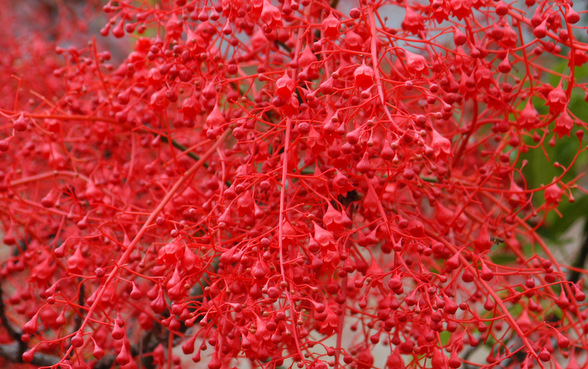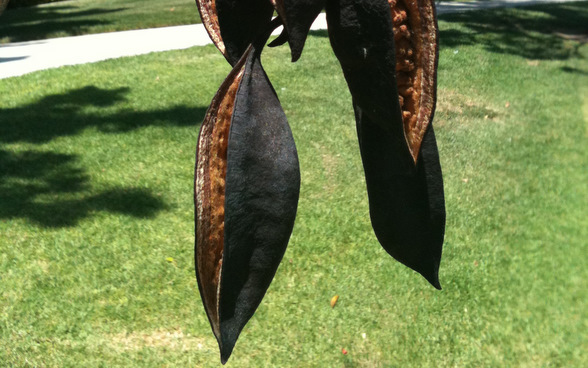Deciduous tree, up to 35 m high, but much smaller when grown in gardens and in cooler areas where it reaches a height of only about 10 m. It can take 5 – 8 years to flower if grown from a seed.
Leaves
Smooth, oval-shaped and can have three or five lobes (and sometimes more). Each leaf is 10 – 30 cm long. The tree loses some or all of its leaves at the end of winter, before flowering, and the leaves turn yellow just before falling.
Flowers
Bright coral-red and bell-shaped, they occur in clusters at the end of branches. They are 1 – 2 cm long and have a waxy surface. They appear after the tree has lost all or some of its leaves.
Fruits/Seeds
A dark-brown seed pod which is tough, leathery and about 10 cm long. It contains rows of corn-like seeds that are surrounded by hairs.
CAUTION: the hairs within the seed pod can irritate the skin and are easily inhaled, so it is not advisable to handle any open seed pods.
Field Guide
Improve your identification skills. Download your Illawarra Flame Tree Field Guide here!





